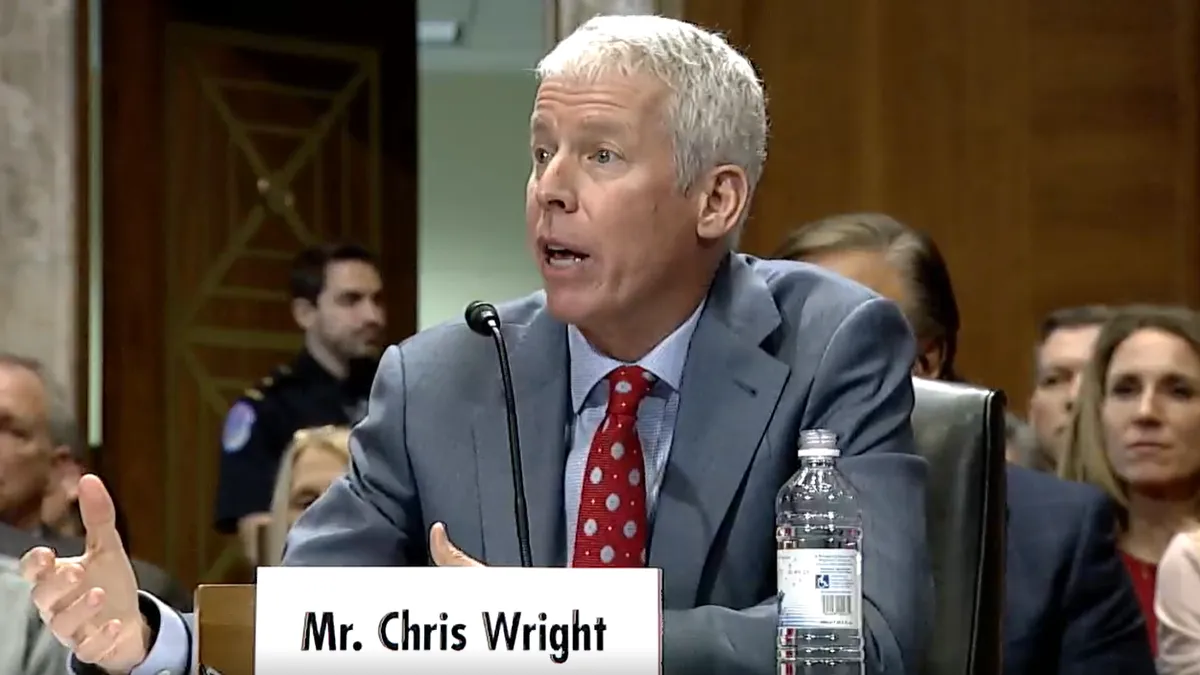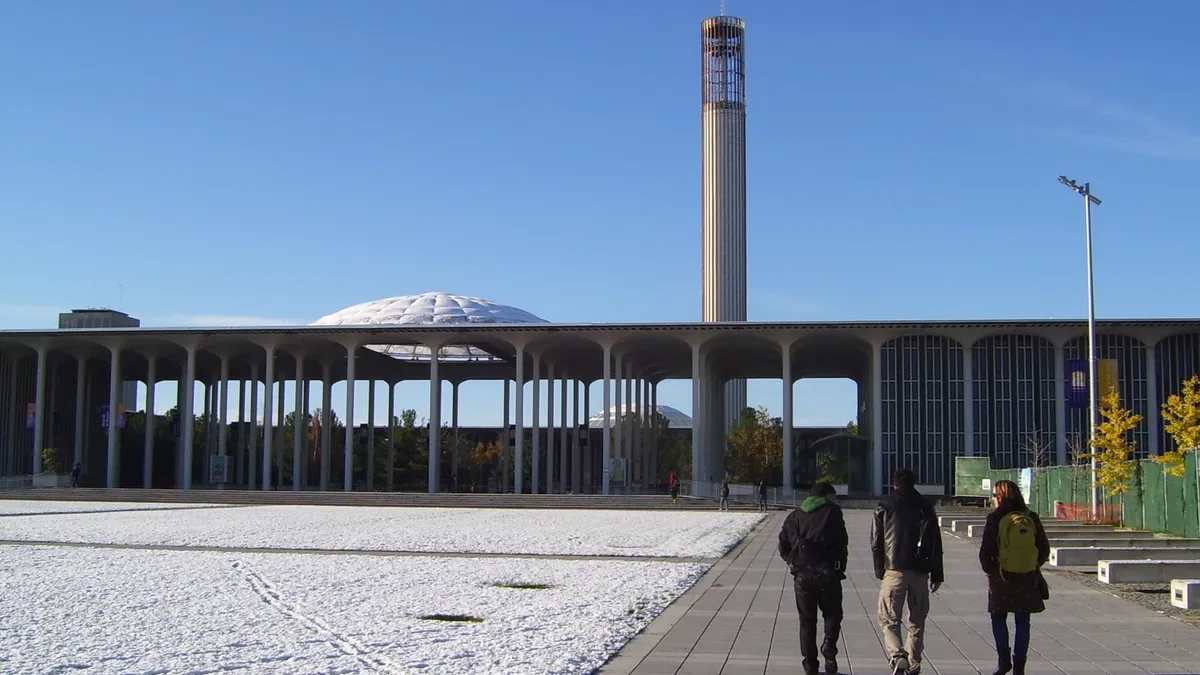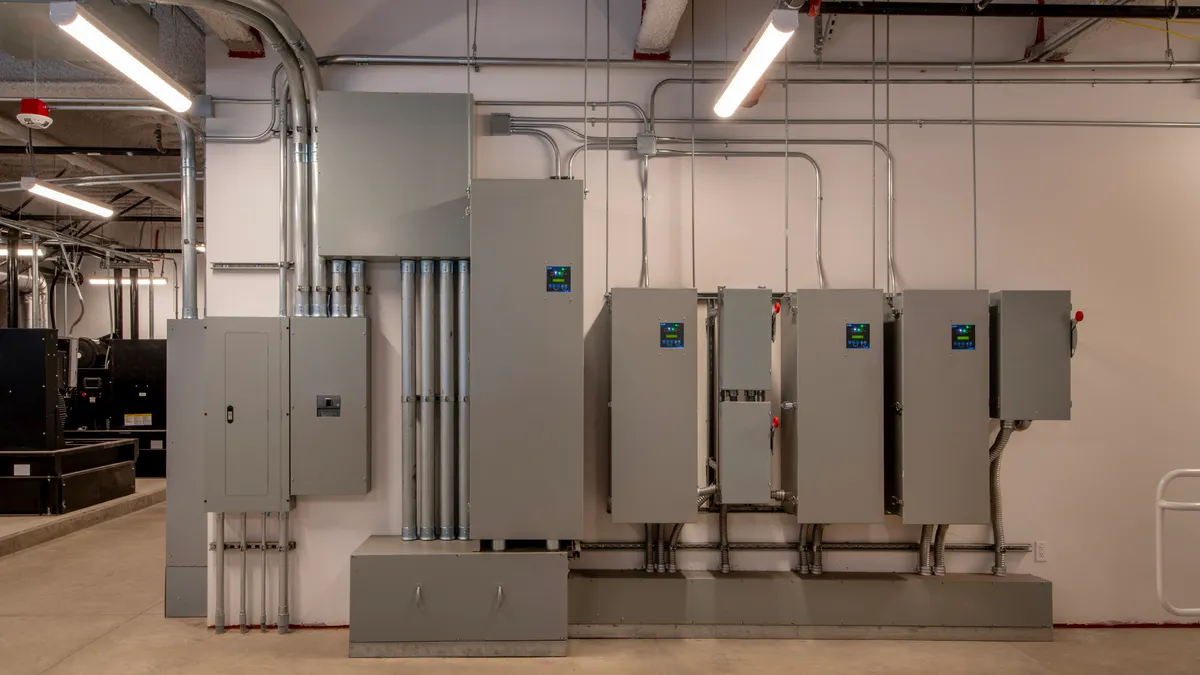When people think of utilities becoming platform providers, New York’s landmark Reforming the Energy Vision (REV) docket is probably the first thing that comes to mind.
That regulatory proceeding, which kicked off in 2014, aims to transform utilities into distribution system platform providers (DSPPs) — neutral arbiters of a multi-directional distribution grid whose main role is to interconnect DERs and manage reliability. The docket has attracted attention the world over for its ambition to shift the utility business model from traditional cost-of-service regulation to one where the utilities earn more market-based revenues through charging transaction fees, selling system usage data, and more.
In New York, the REV is primarily an effort driven by regulators with cautious support from the state’s regulated utilities. But in America’s "Second City," the dominant utility already has plans for similar reforms to its operations on the distribution grid, even before the state opens up its own REV-like regulatory proceeding.
“There are similarities,” said Anne Pramaggiore, CEO of Commonwealth Edison, Chicago’s electric utility. “I do think there are some parallels in this notion of having the grid as this platform and a facilitator and hub for all of this.”
Pramaggiore gave the keynote address at the Energy Thought Summit this week in Austin, Texas, outlining her utility’s efforts to address and encourage the growth of distributed resources and reduce carbon emissions from the electricity system. In her speech, she told the audience that the electric utility can help bring about a “third industrial revolution” by situating itself as the indispensable network at the “convergence of energy and digital communication.”
In an interview following her address, Pramaggiore told Utility Dive that much of the inspiration for her utility’s work — including new efforts in microgrid deployment, customer-facing energy applications and pricing DERs — springs from the concept of platform economics. That concept has found its way in the New York proceeding as well, she said, accounting for some of the similarities.
Platform economics puts the pieces together
ComEd’s journey to REV-like reforms began about two years ago, Pramaggiore said, when Val Jensen, the utility’s head for energy efficiency and consumer products, convened a group of power sector stakeholders to discuss how the utility could enable a smarter grid.
"The idea was, bring your ideas to us,” Pramaggiore said of the program, dubbed the Smart Grid Exchange. “We're building a smart grid, bring your ideas in.”
The group attracted names from energy management companies like Nest and Bidgely to consulting firms like Accenture. Pramaggiore said the stakeholders all brought valuable contributions on how to improve the functionality of the grid, but the effort lacked a unifying concept until the team started reading about platform economics — the concept that today's economy is predicated on the ability of companies and individuals to leverage networks, both physical and digital.
Whether it’s the Internet connecting your credit card transaction to the bank or the power grid delivering electricity to your home, the modern economy is built on a series of platforms, the theory goes, and their performance plays a big role in shaping the opportunities for countless other players in the economy.
“Val started this Smart Grid Exchange and our thinking evolved from there, but we couldn't get our arms around it,” Pramaggiore said. “We'd talk a lot about what this would be ... and then we started reading platform economics and it kind of clicked.”
In her speech, Pramaggiore credited Jeremy Rifkin’s 2011 book The Third Industrial Revolution as one of the group’s guiding texts. In that book and subsequent works, the economist and social theorist argues that the convergence of energy and digital communications networks has the capacity to address society’s most pressing environmental and social issues — if there’s a smart platform to enable it all. (You can check out this interview with Rifkin for a deeper explanation.)
“It was kind of like having a jigsaw puzzle where you have all the red pieces in one corner, all the blue pieces in another corner and you can kind of see it coming together, but it's not there,” Pramaggiore said. “Then all the sudden we started reading platform economics and the pieces started coming together. It made sense to us.”
Enabling a smarter platform
In a sense, the utility grid has always been a platform. Even 100 years ago, the grid provided a highway for electrons to get from generation facilities to homes and businesses around the country. The difference between that and the kind of platform Pramaggiore envisions is the intelligence and operational efficiency of the network.
In the context of utilities, Pramaggiore said, the goal of the platform is to facilitate and manage the connection and use of various distributed resources.
“The smart grid is really about managing all of that,” she said, “automating enough in the grid that you can manage those fraction-of-a-second changes that you have to make because the weather prediction was that it was going to be sunny and now it's not and your solar is not coming on — how does the grid manage to readjust to that?”
ComEd is in the middle of rolling out 4 million smart meters to its customers after smart grid legislation passed in 2011, Pramaggiore said, but realizing the true potential of the utility grid as a smart platform will require visibility and control over both distributed generation and consumer load that go far beyond smart meters.
Figuring out the optimal communications and control software for the distribution grid and the distributed resources coming onto it is a problem that bedevils utilities nationwide. In Chicago, ComEd is taking a similar approach to companies in places with high DER penetrations — California, Hawaii and Arizona — and is pushing for pilot projects to help it understand the distribution system better.
Last year, the company began lobbying Illinois lawmakers to pass an expansion to the 2011 smart grid law that would enable the utility to construct six microgrids at strategic locations around the state. One project, a 10 MW microgrid cluster in the Bronzeville neighborhood on the southside of Chicago, has been touted by the company as a “blueprint for other utility-owned microgrids around the country.” The company is currently using a $4 million grant from the Department of Energy’s SHINES program to install infrastructure to support the project.
The goal of the project, Pramaggiore told Utility Dive, is to tie the new microgrid project to another that already exists at the nearby Illinois Institute of Technology and use the system to better understand how to manage and control distributed resources on the grid.
“There are a few reasons why we think the microgrids are important,” she said. “One thing is we see them as microcosms of the larger grid, so they will allow us to understand how the larger grid will work and that dynamic world.”
But this enhanced understanding is only one of the benefits ComEd sees in owning and operating microgrids. While the utility doesn’t envision installing such projects at a wide variety of public firms, Pramaggiore said they are investigating whether they are the correct entity to do so at a variety of critical public infrastructure sites, such as hospitals, airports, and water-pumping facilities.
“We think there might be a role for us in what we call this critical public infrastructure, and that is a place where you can use the socialization economic tool that we have to offer a public benefit that's largely held in the public trust,” she said. “I don’t think we're going to go build a microgrid for a private manufacturing firm. That's not our job. But for something that creates general public benefit, I think that’s what we do. That's what our socialization mechanism does.”
Beyond that, the utility also wants to test whether such microgrids can offer a “strategic reserve” of backup power, as Pramaggiore put it, that the company can tap into if its energy supply is disrupted.
“It's not about owning a central station plant,” she said. “In a distributed world, where your generation is located on the grid matters. So having enough out there that we've got sort of a safety net to tap into, it's a question … There will be lots of players and we have markets and we have contracts and you can rely on those, but I think it's a question that we want to explore.”
Not everyone in Illinois is as excited about ComEd’s microgrid plans as Pramaggiore. The Citizens Utility Board (CUB) has objected to ComEd’s plans, arguing six microgrids for a pilot program is too much and raising concerns that ComEd could corner the market in the state.
“We don’t want microgrids as a monopoly service; we want the competitively bid,” CUB Executive Director David Kolata told Utility Dive earlier this month.
The debate in Illinois mirrors similar discussions in New York, where some energy stakeholders have expressed concern that utility DER pilot programs are going too far, infringing on REV’s rule that utilities not own distributed resources, except in cases when the open market fails to deliver them.
It remains to be seen how this issue will come to a resolution in Illinois. Right now, ComEd’s legislation to enable the microgrids to move forward remains bottled up in the deadlocked Illinois legislature, where a budget impasse has stalled work on other subjects.
Pricing distributed resources
While the concept of platform economics is a compelling one, it faces one glaring challenge as it is applied to the distribution grid — pricing.
In most networks, prices and transaction costs for parties can be reasonably and easily defined. You buy a product through Amazon, the site and your card provider get transaction fees, and the seller receives compensation for the product.
On the distribution network, it’s not so simple. While many have tried, no one has come up with a winning method to accurately value the temporal and locational value of distributed resources like rooftop solar on a utility’s system. Most states use retail rate net metering as a rough proxy for the value of solar, but many stakeholders agree a more sophisticated valuation mechanism is needed to capture a more true value of a variety of DERs.
ComEd is no exception, Pramaggiore said. The utility is working toward its own approach to valuing DERs, starting with studies on how much capacity it has for distributed resources across its entire system.
“When you think about how much DER you can accommodate on your system, you can do a full engineering study, [but] it's timely and costly,” she said. “You can use heuristics and you're probably going to get it wrong. But what they're trying to do is kind of cut down the middle.”
ComEd engineers are taking the utility’s more than 5000 distribution feeders, studying them under multiple conditions, and then “bucketing them into 20 different categories” based on their characteristics and behavior.
“[W]hen somebody comes in and says, ‘I want to connect to your system,’ you can say, 'Oh you’re in category three and we understand how category three feeders work,’ so we can make a much quicker decision about how much we can take on,” Pramaggiore said.
Those efforts will form the “foundation for starting to price that stuff,” she said. “We're also starting to work with some economists to put a pricing overlay because you can start to do locational pricing.”
ComEd recently announced a new greenhouse gas measurement metric devised in partnership with CUB and the Environmental Defense Fund. In the future, Pramaggiore said, findings from that initiative could work their way into pricing as well.
“We've got this hosting capacity study, and now we've got greenhouse gas solutions that we’ll start to think about, and does that become part of the pricing too?” she said. “Still, the pieces of the puzzle are not together, but we're working on them.”
It's a work in progress, but the ComEd CEO thinks her company’s approach to DER valuation could prove to be a model for other utilities around the country. While most attempts at DER valuation have started from a high level by applying abstract economic theories, she said, ComEd is starting at the system level and working its way up instead.
“There's an economics element and a systems element,” she said. “I think a lot of people are starting from the economic side and trying to work through it, but you really need the system piece too, and I would say that's the only thing — that we sort of started from the system and then added the economics.”
DERs and ComEd’s business model
ComEd's central goal of valuing distributed resources appropriately and better understanding how to manage them is facilitating wider deployment and use of such DERs, according to Pramaggiore. That, and ensuring equity across the system.
“We want to make sure if there's value that someone is bringing onto the grid by adding distributed generation, that they are getting appropriate compensation for the value they bring,” Pramaggiore said. “I don't want other customers subsidizing, and that's the concern. When you don't understand the value, when you haven't done the really really granular work to get there, you're going to get it wrong.”
ComEd is an urban utility with large low-income populations, the CEO explained, so ensuring equity on the system is crucial. But, she added, “we’re open to see [DERs] come in. That’s what customers want. We think we're moving to a clean system, we think that's critically important, and that's part of it.”
But encouraging the development of a platform utility and enhancing deployment of distributed resources raises questions about the utility business model. In addition to the DER initiatives, ComEd has pilot programs with Bidgely and MeterGenius that aim to help customers understand their usage patterns and reduce consumption. If successful, Pramaggiore said the utility will look to roll out similar programs to all of its customers.
That means that while ComEd is still in the business of selling energy, the utility is actively helping customers generate and store their own power, as well as draw down their consumption, the CEO said. Just how that translates to a sustainable business model in the long run remains to be seen.
“We think about the business model a lot and our thinking is probably more solid on what the grid will do technically and some of these customer pieces,” she said. "I think how this all comes together in a business model is still hypothetical at this point.”
While nothing is set in stone, Pramaggiore has a few inclinations as to what may happen. First, she said, traditional cost-of-service regulation is “not going away anytime soon.”
“We will continue to earn off of our assets our regulated rate of return model for a while,” she said. “I think you'll see more performance standards in that mix, but I think you'll still see rate-of-return regulation for a while.”
Even within that model, however, the way utilities look at which investments are prudent could change.
“I think that we'll see more pressure on bending the cost curve and more broad thinking on bending the cost curve,” she said. “So you've got a least cost requirement in your law — how many things did you look at to figure out what could cause you delay or defer [an investment]?”
Usually, those types of decisions involve non-wire alternatives — turning to DERs and demand-side management for grid upgrades instead of building new substations, transmission lines, or centralized generation. But Pramaggiore said ComEd is also looking at some more innovative ways to make money from saving customers energy.
In the pending Illinois legislation, there is a provision that would treat investments in energy efficiency like any other utility spending project, allowing ComEd to earn its regulated rate of return on initiatives that draw down consumer demand.
“Today what happens with energy efficiency is we recover dollar-for-dollar what we spend on energy efficiency. This would actually put [efficiency programs] into a regulatory asset,” Pramaggiore said. “They would look like poles and wires that we recover over a longer period of time and we earn a return on it. So, it really treats a service like energy efficiency as an asset.”
By converting a utility service — efficiency offerings — into a regulatory asset, ComEd can start to fit its platform provider vision into the existing cost-of-service regulation.
“You start to make that shift,” Pramaggiore said. "If services are what we're going to be providing, what's the business case in that? So that's part of the thinking — there's a service element that's going to start to be more important in the future, and how do we make that a business for us?”
The efficiency provision in ComEd’s bill is just one way the utility can start to make money as a platform service provider, she said. Another idea is to leverage the utility’s communications platform on the grid to provide services to other companies, like automatically reading gas and water meters to create efficiencies across the system.
“There should be a net benefit for everyone, but there would still be a fee coming into the manager — us — of the communication asset,” she said. “So that's another sort of notion of fees, sort of a transaction cost, like a platform transaction cost … So this notion of the regulated rate-of-return, asset-based model still holds, but it starts to give way to some extent to services and fee-based models.”
That evolution mirrors what policymakers in New York envision for their regulated utilities as well. While regulators there expect cost-of-service regulation to persist for a while, they aim to push utilities toward more performance-based metrics and market-based earnings to move them away from a reliance on building new infrastructure to sustain their businesses. Utilities there have largely endorsed that goal in the REV docket, but they, like ComEd, expect the traditional asset-based regulatory model to persist for years to come, and have pushed to preserve — at least for now — it in filings with the commission.
What’s next
While the budget battles in Illinois make it seem like a tough place for a utility to do business, Pramaggiore said that her biggest challenge in transforming her utility’s business model isn’t politics or her regulators.
“We have proactive policymakers in Illinois,” she said. “First, they passed the smart grid act and that was very, very forward-looking legislation. And we have regulators also who are looking for innovative approaches. They are very open.”
In the coming months, Illinois regulators are expected to open a REV-like docket to address many of the issues already being considered by the ComEd team, Pramaggiore said.
“I think the biggest challenge is that, even with the right mindset, it just takes a while,” she said. "The legal framework is old and it's very complex and so … it just takes time. But I don’t think we have unwilling parties … I think we have very willing parties."
The challenge, Pramaggiore said, will be trying to work through that lengthy regulatory process while also keeping ahead of the technological change happening in the real world.
“It's just a process that is not going to move fast and the challenge for us is we have to be smart enough to be ahead enough that technology doesn’t overrun us. That's what I ask myself and the folks in our company to do is to be thinking ahead … We know we've got a framework that's going to take a while for us to work through, so we've got to be that much farther ahead in our thinking. That's what it requires of us."





















